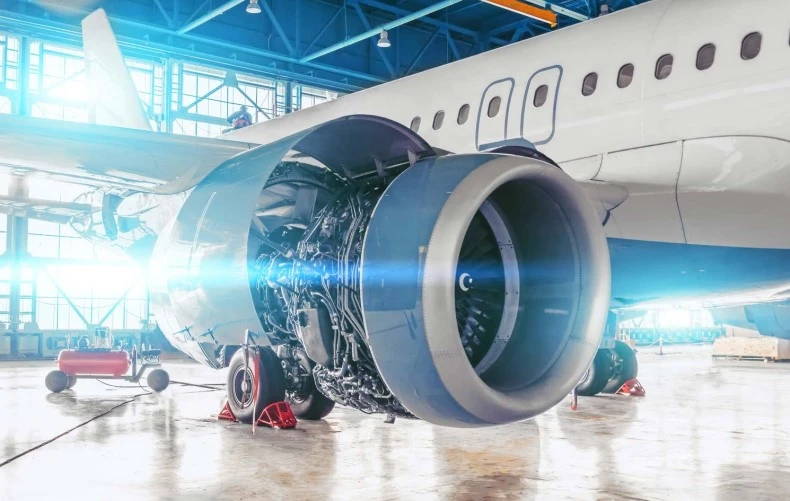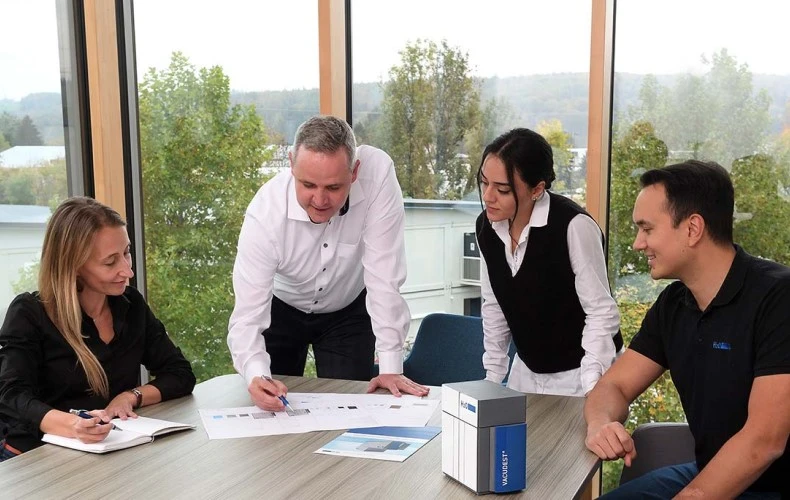Contact us
Water is used in almost every branch of industry in one way or another and in varying quantities. The types of wastewater generated are as diverse as the industries themselves. While demand for water is steadily increasing, at the same time it is rapidly becoming a scarce and endangered resource.
This is not only a major problem in third world and emerging countries, but it is also already becoming apparent in western European industrialized nations. According to the WEI+ index of the European Environment Agency (water exploitation index plus), the water supply is already endangered with an index value of above 20. In Europe, there are four countries that have already reached this value: Cyprus, Greece, Turkey and Spain.
Water is nowadays already traded on the financial markets and there are investment companies holding seminars on how to invest most effectively in the most important resource of the future. This is because demand will increase dramatically in the coming years and availability will decrease. This for sure will lead to an increase in water prices and a worsening of the water crisis. According to the Federal Agency for Civic Education (Bundeszentrale für politische Bildung/bpb) the last 100 years, global consumption of water per year has grown from 17500 billion ft³ in 1901 to over 140 trillion ft³ in 2014.

In the next 80 years, the world population will grow to 11 billion people and more people will leave poverty behind gradually becoming members of the middle classes. This will be accompanied by higher consumption and consequently higher water consumption. Importantly, this does not only mean consumption in households, but also for example in food production.
To produce one kilogram of coffee, almost 670 ft³ of water are required. Water demand therefore increases due to several factors: there are more people and also more money available to these people, which means that these people can also consume more water or consume products that were produced with a high water consumption.
Evaporation and distillation are two different processes, although they are often mistakenly used as synonyms.
"Evaporation" is the process of changing a liquid to its gaseous state. This is usually done by raising the temperature or reducing the pressure.
Distillation is the process of separating a liquid based on its different boiling points. This is usually done by heating a mixture of liquids and collecting the resulting condensate.
Evaporation and distillation are similar processes, but distillation uses the concept of vaporization for the separation of a liquid, while evaporation simply aims to convert a liquid to the gaseous state.
A vacuum distillation system can help conserve the important resource of water. They unleash their potential in a wide range of different industries and applications. What kind of wastewater can be treated and which industries may profit from it?
In order for a coating to bond optimally with the surface, for example on a car body part, the component must first be thoroughly cleaned. Typical cleaning methods include cleaning with water, steam degreasing or ultrasonic cleaning. The most common variant is cleaning with water.
There are many different types of contamination possible, and the residues are then often found in the water. They range from organic and inorganic substances such as oils, greases, and lubricants to residues from rollers and metal abrasion.
More information on vacuum distillation as a wastewater treatment process in surface technology.
Large volumes of process water are generated in the aviation industry. In addition to the cleaning of components, it also arises during mechanical manufacturing processes and during crack detection. The latter is carried out by using the dye penetration process. At its beginning and end, thorough cleaning with water takes place. This contaminated water must not be discharged into the public sewer system without prior cleaning.
More information on wastewater treatment in the aviation industry using vacuum distillation.

In specialized waste management companies, it is becoming increasingly difficult to comply with the permitted limits for pollution in water. The VACUDEST modular system ensures that you will end up with a system that is reliable, safe and individually equipped for the requirements of your industry.
Detailed information for vacuum distillation in waste management.
The manufacturing of electronic devices does not only result in the consumption of water required for the extraction of raw materials, such as copper, cobalt, or gold. In addition, the production of printed circuit boards generates toxic wastewater contaminated with diverse heavy metals. After filtering out the heavy metals, washing wastewater can be treated by a vacuum distillation system.
More information on vacuum distillation for wastewater in the electronics industry.
In the metal processing industry, a vacuum distillation unit can also help to drastically reduce the volume of wastewater. In many cases, after distillation with the right vacuum distillation system, the treated wastewater can be returned to the production cycle.
Some case studies you can see here:
More information on the use of vacuum distillation in the metalworking industry.
Wastewater from plants that manufacture pharmaceutical and chemical products is often contaminated with various active ingredients that can have a significant impact on the environment. These frequently include wastewater containing hormones, antibiotics or cytostatics. The wastewater is mainly generated during the cleaning of production machines, containers, active ingredient containers and mixing containers for medications.
Pharmaceutical plants often also maintain cleaning machines for ampoules and other active ingredient containers. Vacuum distillation systems, through the physical process of evaporation, are ideally suited to separate substances such as API, pharmaceuticals, hormones, trace compounds, pesticide effluents, native oils and emulsifiers, refractory COD, PFAS, non-polar organic substances and more from process wastewater in the pharmaceutical and chemical industries.
More information about safe treatment of pharmaceutical and chemical industry wastewater.

In short, a vacuum distillation plant is worthwhile from an annual wastewater volume of around 7.000 ft³ to around one million ft³. For larger volumes, it may be justified to purchase multiple units, especially if high distillate quality is the goal. A vacuum distillation system is an excellent solution for saving water. It provides reliable access to this important resource and helps companies protect the environment also on the long-term. However, the technology has also got its limitations.
See the application limits of industrial vacuum distillation.
Efficient water treatment systems are constantly evolving and subject to a continuous innovation process. In addition to improved product quality and treatment quality, the aim should be to offer users a high level of user-friendliness and reduce the users’ workload through technical innovations.
To advance the development of vacuum distillation, H2O GmbH has created a separate department that is concerned with making sustainable vacuum distillation accessible to even broader industrial productions. It is also available to advise companies on the design and selection of the right wastewater treatment system for their own production.
More information on the research and development department of the application technology and its consulting services.

By recirculation, one reduces overall water consumption and ensure its availability for the production processes. Disposal volumes and costs decrease significantly, while reducing the burden on local wastewater treatment plants.
An informative table with a calculation example for the profitability of a vacuum distillation plant in comparison to alternative treatment methods can be found here.
If you would like to find out whether H2O vacuum distillation plants can also help your company to save costs and conserve resources, we are happy to advise you.
You have questions on our VACUDEST systems?
Kindly contact us!
Your contact is:
Thomas Dotterweich
Senior Sales Engineer
+49 7627 9239-306
thomasm.dotterweich@h2o-de.com
You need consumables, spare parts or a maintenance date?
We will be pleased to assist you!
Your contact is:
Carles Fité
Technical Customer Support
+49 7627 9239-888
carles.fite@h2o-de.com
You want to be part of our team and create the wastewater-free future with us?
We will tell you how!
Your contact is:
Bettina Böhringer
Human Resources
+49 7627 9239-201
career@h2o-de.com